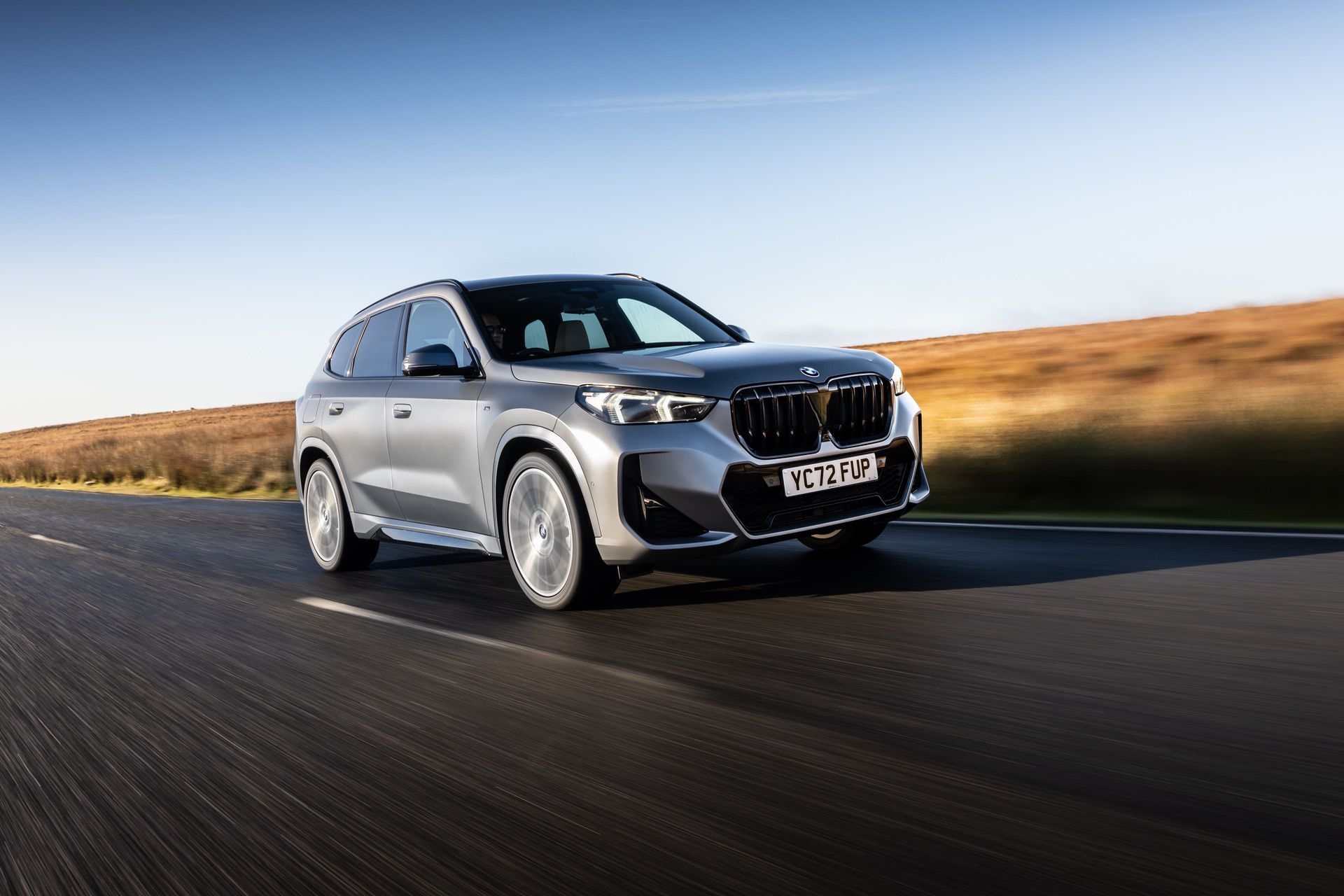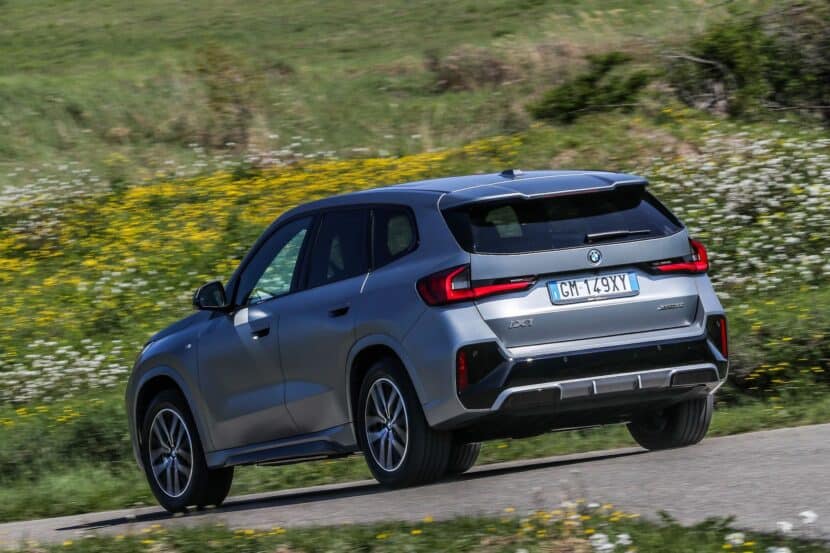A moose test might seem like a forced scenario you’ll probably never have to face but we’d argue the procedure is relevant to see how a certain car fares in an evasive maneuver. SUVs typically don’t excel due to their higher center of gravity while EVs are not ideal either for this sort of test because they weigh more than ICE cars. What happens when you combine the two? The Spanish folks at km77 decided to find out.
They took the BMW iX1 xDrive30 to discover how it behaves when the driver suddenly turns the steering wheel. The crossover came equipped with 19-inch wheels wrapped in 245/45 R19 Hankook Ventus S1 evo3 tires specifically engineered for this model. Before doing the dreaded moose test, the iX1 navigated through the cones in the slalom test during which it performed admirably. It needed 23.9 seconds to complete the course, or just about as much as the i4 eDrive40 (24.0 seconds) and a little bit slower than the M340d xDrive Touring (23.7 seconds).
In the first moose test, the driver had an entrance speed of 77 km/h (48 mph), but it wasn’t a successful run as he took down one of the cones. It wasn’t until the entrance speed was lowered to 72 km/h (45 mph) that the run was completed without hitting any cones. The BMW iX1 was doing 62 km/h (39 mph) in the middle of the section and had an exit speed of 44 km/h (27 mph).
The driver points out that the electronic stability control barely kicked in whereas on the previously tested X1 sDrive18d, it was rather intrusive, so much so he couldn’t maneuver the vehicle as he wanted. Although the iX1 didn’t complete the moose test with the ideal 77 km/h (48 mph) entry speed, Km77 appreciated how the crossover behaved as it quickly responded to the driver’s inputs and remained stable.
Source: km77.com / YouTube






































































